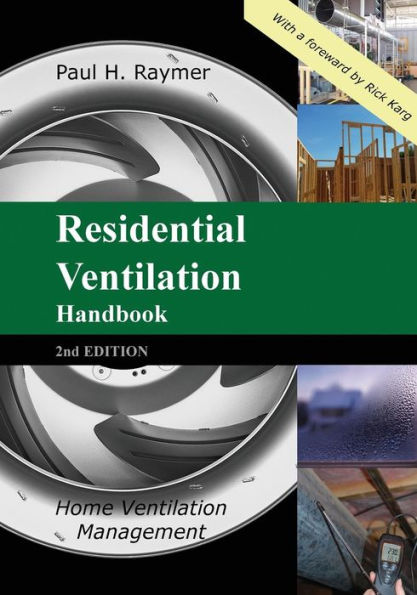New homes are required to be built tightly - much tighter than they ever used to be. The codes demand it. Programs demand it. And both the occupants and the building need fresh air. There are a lot of choices on how to accomplish adequate airflow that is quiet, energy efficient, and comfortable. This book helps to sort out those choices. The first edition of the Handbook was used in classrooms and certification courses across the country. A lot has happened since that was published seven years ago. This edition includes updated codes and Standards along with more about indoor air quality (IAQ) and Disability Adjusted Life Years (DALYs).
This book was written by a hands-on, practical, subject matter expert. It was written to be used by . . . people. It is not meant to be an engineering text book. It includes information on:
- Choosing a residential ventilation system;
- Basic applications, airflow, and sizing guidelines;
- System design choices;
- Sound;
- Installation details;
- House pressures;
- Passive inlets, outlets, transfer grilles and makeup air;
- Verification of performance and testing;
- System troubleshooting, service, and maintenance;
- Costs of ventilation;
- Ventilation codes;
- Program requirements and opportunities;
- Fan types and applications;
- Special application ventilation;
- Ventilation for cooling;
- Humidifiers, dehumidifiers, filters, and ventilation accessories;
- Indoor air/environmental concerns;
- The future of the residential ventilation arts.
The appendices includes extensive resources on organizations and where to find fans and equipment, make-up air systems, and test equipment.
And it includes a forward by Rick Karg from Residential Energy Dynamics (RED) the primary, practical, on-line ventilation resource.
New homes are required to be built tightly - much tighter than they ever used to be. The codes demand it. Programs demand it. And both the occupants and the building need fresh air. There are a lot of choices on how to accomplish adequate airflow that is quiet, energy efficient, and comfortable. This book helps to sort out those choices. The first edition of the Handbook was used in classrooms and certification courses across the country. A lot has happened since that was published seven years ago. This edition includes updated codes and Standards along with more about indoor air quality (IAQ) and Disability Adjusted Life Years (DALYs).
This book was written by a hands-on, practical, subject matter expert. It was written to be used by . . . people. It is not meant to be an engineering text book. It includes information on:
- Choosing a residential ventilation system;
- Basic applications, airflow, and sizing guidelines;
- System design choices;
- Sound;
- Installation details;
- House pressures;
- Passive inlets, outlets, transfer grilles and makeup air;
- Verification of performance and testing;
- System troubleshooting, service, and maintenance;
- Costs of ventilation;
- Ventilation codes;
- Program requirements and opportunities;
- Fan types and applications;
- Special application ventilation;
- Ventilation for cooling;
- Humidifiers, dehumidifiers, filters, and ventilation accessories;
- Indoor air/environmental concerns;
- The future of the residential ventilation arts.
The appendices includes extensive resources on organizations and where to find fans and equipment, make-up air systems, and test equipment.
And it includes a forward by Rick Karg from Residential Energy Dynamics (RED) the primary, practical, on-line ventilation resource.

Residential Ventilation Handbook 2nd Edition: Home Ventilation Management
424
Residential Ventilation Handbook 2nd Edition: Home Ventilation Management
424Paperback(Updated Second ed.)

Product Details
| ISBN-13: | 9780990678144 |
|---|---|
| Publisher: | Paul H. Raymer |
| Publication date: | 10/10/2017 |
| Edition description: | Updated Second ed. |
| Pages: | 424 |
| Product dimensions: | 7.00(w) x 10.00(h) x 0.86(d) |
